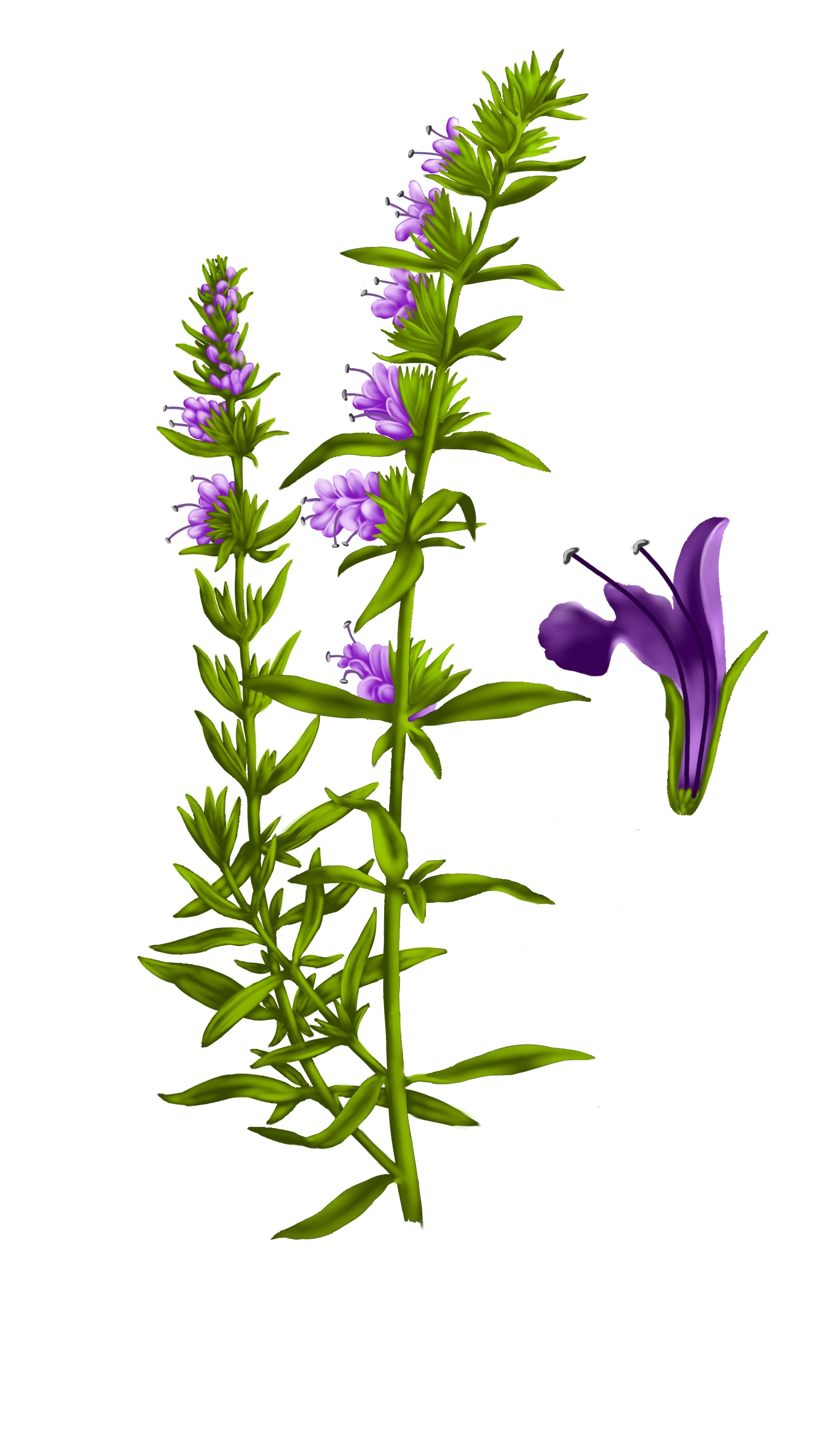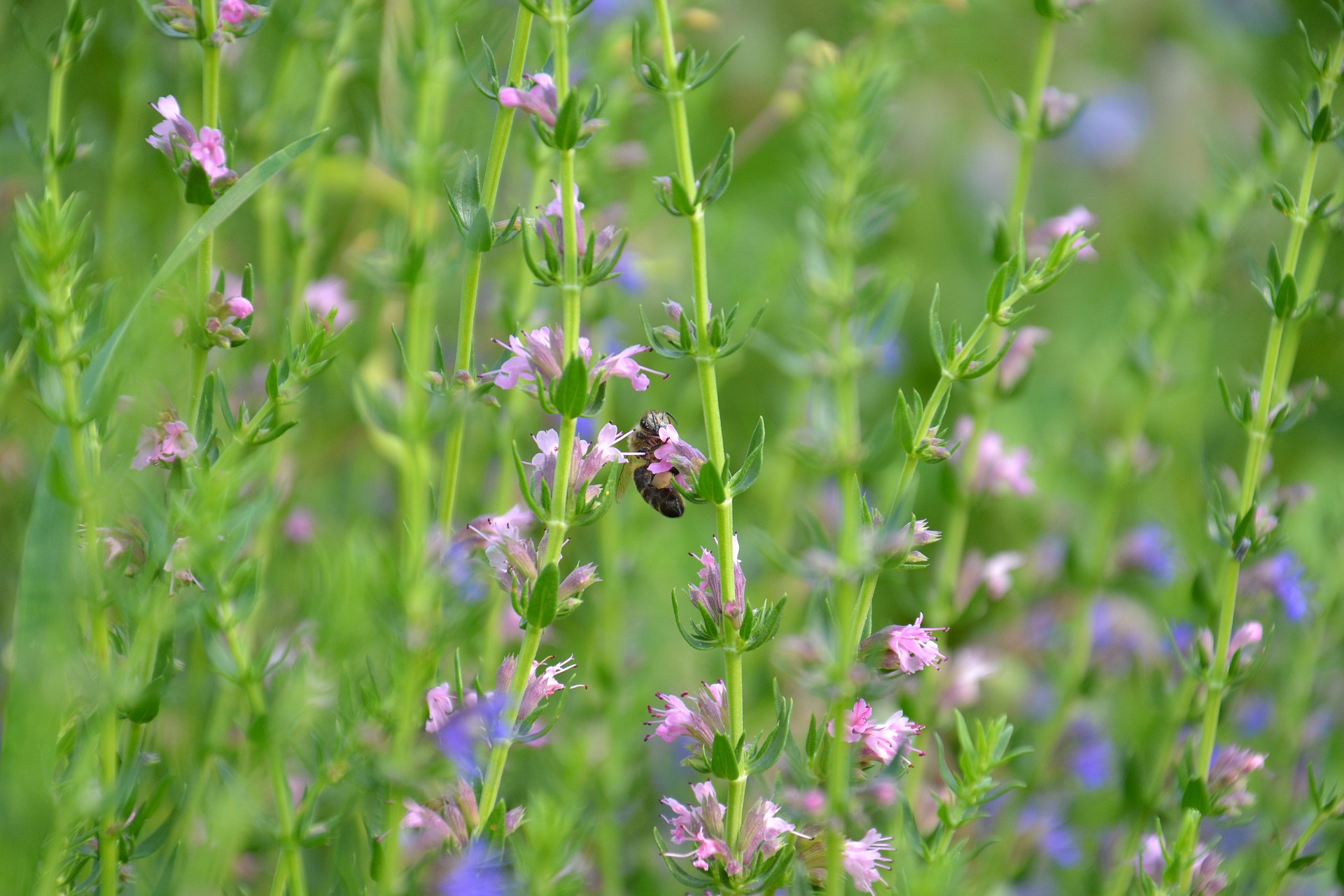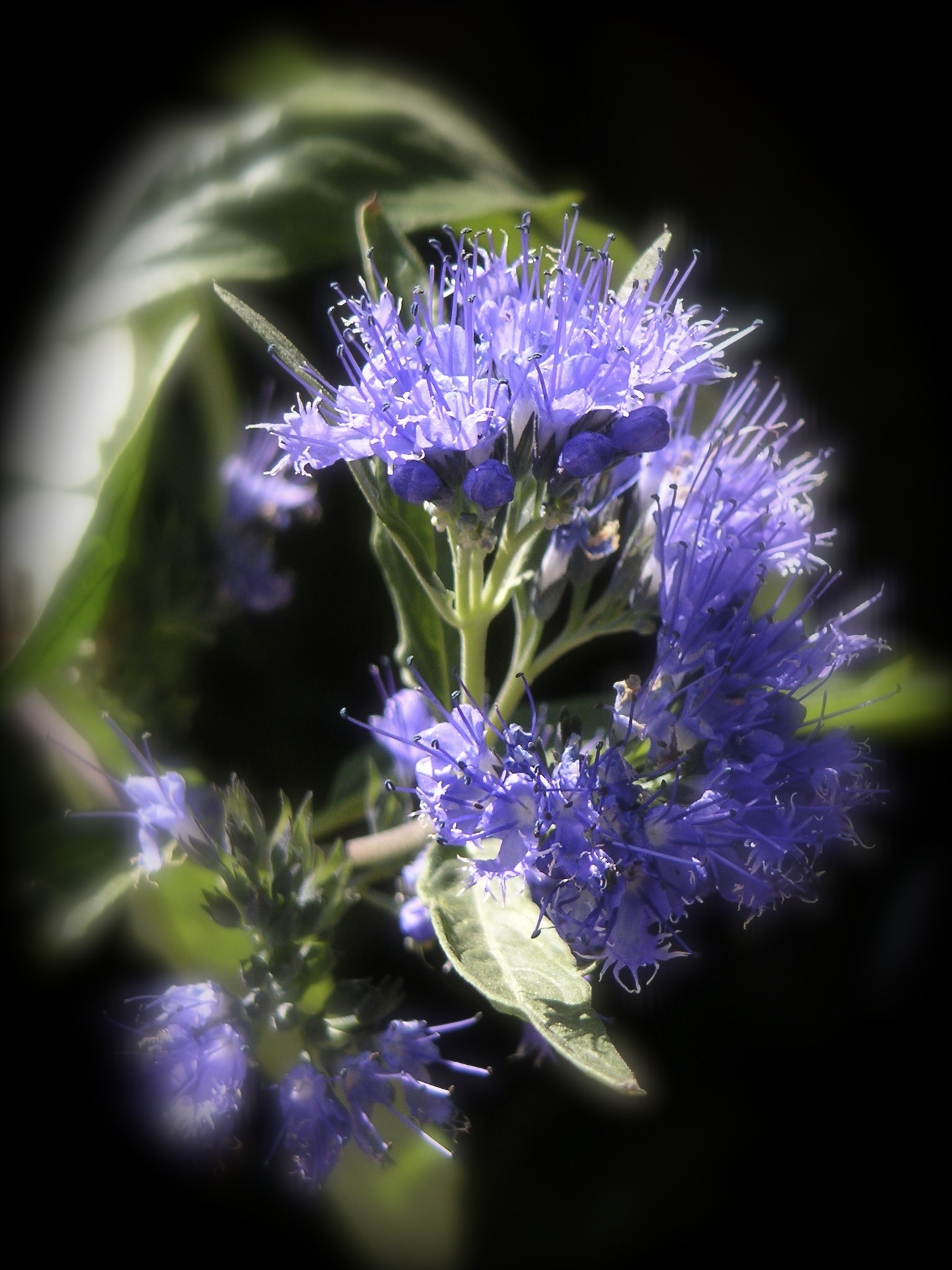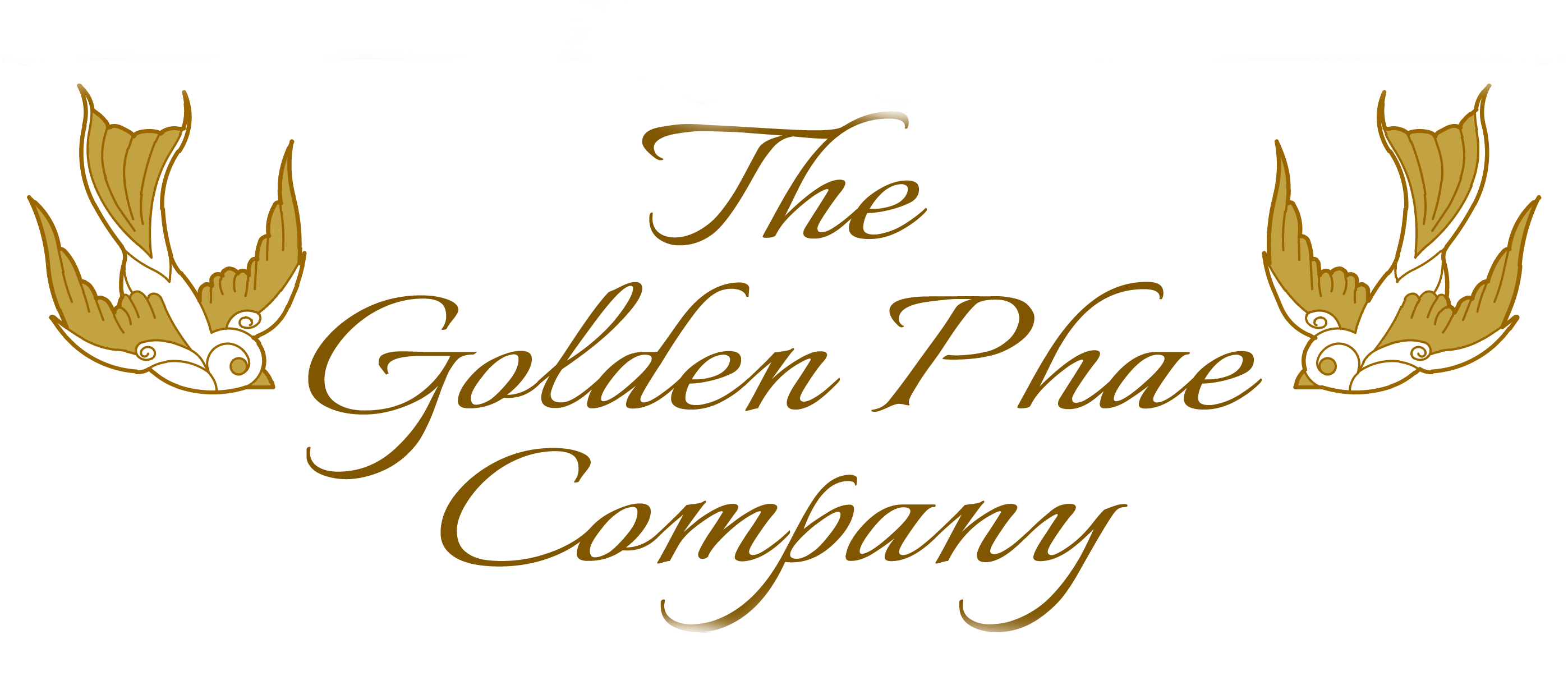 Cleanse me with hyssop and I will be clean… (Psalms 51:7)
Cleanse me with hyssop and I will be clean… (Psalms 51:7)
- King David sang repentantly, playing the psaltery. Why exactly hyssop? What is it about this obscure medicinal herb that inspired the most famous poet in the ancient world to sing about it?
In fact, this herb is mentioned with great respect not only in the Old Testament, but also in various medical texts from ancient Greece to Mesopotamia, from Egypt to Arabia. It was widely used not only in religious ceremonies, but in magical potions popular at the time, as well as in various elixirs and balms created by the medieval monks. 
In ancient days, people believed that this plant was able to drive the angel of death away from their dwellings if the walls and beams of the building were sprinkled with the infusion of hyssop, and if the dried herb bundles were placed in the corners of the building. Believe it or not, there was a legitimate reason behind this custom – hyssop possesses strong antibacterial properties and is able to help lessen the danger of infection and its potent aroma was responsible for driving away various insects that could potentially carry and transmit typhoid fever, malaria, yellow fever and other ailments that could appear with these uninvited guests.
It was reported that in towns affected by the plague, some families were able to protect themselves by using hyssop vinegar (vinegar infused with the areal parts of the plant). The infusion was poured onto a hot brick and the dwelling fumigated. Trade caravans departed for their long journeys through the desert with large amounts of hyssop that they believed would drive away desert demons. In reality, the herb protected them from numerous insect bites that carry various diseases, as well as from the invisible world of bacterial pathogens.
Ancient doctors believed that Death itself was afraid of this plant and was driven away when the patient was administered hyssop-infused wine. Hyssop, like thyme, is a powerful immune booster and has been used to help reduce inflammation. It can have a positive effect on the nervous system, is an antibacterial and possesses an antitussive effect. Hyssop has been shown to positively affect the lungs and bronchi, digestive tract and kidneys. We can easily see why, in the absence of antibiotics and synthetic drugs, people learned to rely on its healing powers, sometimes confusing them with magic. According to some ancient writings, hyssop has been used to treat even leprosy, a formidable disease that during dark ages was thought to be a curse. Leprosy is difficult to treat even in modern times, so no wonder that back in the day it was viewed as a death sentence. With poor early diagnostic techniques various skin disorders, such as dermatitis, psoriasis, keratosis and eczema were often mistaken for leprosy, and the unfortunate individuals that suffered from these conditions were often ostracized and banished from their communities, doomed to a lonely subsistence and sometimes to slow and painful death from starvation.
 Therefore, the use of hyssop became extremely important, since it has shown to be a potent remedy against infections, bacteria and inflammation. It can relieve eczema, soothe psoriasis, treat wounds and staphylococcal abscesses, acne and demodicosis, providing the affected individual not only the hope of returning to the life in the community, but renewed, purified and healthy skin tissues as well.
Therefore, the use of hyssop became extremely important, since it has shown to be a potent remedy against infections, bacteria and inflammation. It can relieve eczema, soothe psoriasis, treat wounds and staphylococcal abscesses, acne and demodicosis, providing the affected individual not only the hope of returning to the life in the community, but renewed, purified and healthy skin tissues as well.
So, after learning of the amazing properties of this herb I could not help but to include it into several of the herbal complex formulas we use in our product line. And now every time I am busy extracting the herbs to use in products I recall the famous words of King David: “Cleanse me with hyssop and I will be clean… (Psalms 51:7), and I feel connected with the ancient wisdom.
This herb loves the southern climate, but its northern counterpart, thyme, is also quite a hero of the plant world. Grandmothers around the world often prepared herbal coughing teas using both of these herbs, as well as foot baths to relieve tired feet and cracked soles. It is very easy to do – all you need is to make strong hyssop or thyme tea and pour it in a footbath filled with warm water. Warm compresses to return moisture to dry hands (extremely important right now with the increased use of hand sanitizer and hand washing during the pandemic) can be easily made by steeping hyssop or thyme in light oil (grapeseed, apricot, jojoba, almond – your choice), that is then used overnight with either cotton gloves or thin socks if gloves are not available. Your hands and feet will thank you!
Here is another great easy recipe for a face treatment – hyssop or thyme ice cubes. Use them in the morning, then wash your face with warm water. This procedure helps awaken the nerve endings and capillaries, diminish puffiness caused by stagnated lymph, as well as get your pores pumping, getting rid of old acid mantle particles clogging them. You can also use hyssop and thyme in a steam bath for your body. Hyssop and thyme steeped in hot water will relieve muscle stress and relax the nervous system. You will feel renewed, both mind and body.
With all that said, please remember that hyssop is an herb that is rich in bioactive compounds. A little goes a long way and more is not always better. Use it sparingly, starting with low doses and increasing them gradually, slowly. When using hyssop essential oil, use only a couple of drops, no matter how wonderful the aroma is. This plant is a great example of nature’s magic – ancient, potent, mysterious. Use it right and we hope it brings you both health and joy!
- https://www.sciencedirect.com/topics/agricultural-and-biological-sciences/hyssopus-officinalis
- https://simplyhealth.io/14-simple-ways-to-use-hyssop/?utm_source=%2Bhyssop&utm_medium=14SimpleWaystoUseHyssop&utm_campaign=adw_us&gclid=Cj0KCQjw0Mb3BRCaARIsAPSNGpUlhqz4c9dJ-YrBKCK-VjA3mrTDhm_ByUKse-egq7zoAz38kQ5pefgaAnVyEALw_wcB
